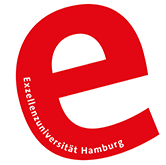What have they accomplished so far?Taking Stock of CUI: Advanced Imaging of Matter
3 May 2023, by Ingeborg Adler
Since 2019 Universität Hamburg has been a University of Excellence. A year earlier, 4 clusters of excellence received grants. What has been accomplished since then and how has the funding been used? The Cluster of Excellence CUI: Advanced Imaging of Matter talks about its previous research and funding in the photon and nanosciences.
Path-breaking research findings, new buildings for teaching and research, tailor-made programs for outstanding researchers, successful exhibitions: the groundwork for these achievements was already laid in the prior Cluster of Excellence The Hamburg Centre for Ultrafast Imaging. From 2012 to 2018, the cluster focused on the imaging of the ultrafast movements of molecules, atoms, and electrons. In 2018 the Excellence Commission decided that this research on the properties of matter needed to continue. The cluster’s successor, CUI: Advanced Imaging of Matter, is now looking at functionalities: the larger and more complex chemical and physical systems become, the more new properties they develop. Take, for example, superconductivity, which is the ability to conduct electricity without energy loss.
The physics and chemistry researchers involved in the project want to understand these properties so that they can one day steer them. There are 160 researchers employed directly with the cluster. Another 170 members of various research groups lend support. The researchers hail from Universität Hamburg, the Max Planck Institute for the Structure and Dynamics of Matter (MPSD), the European XFEL GmbH, and DESY.
The cluster has already produced over 600 publications. Of these, 46 alone can be found in highly prestigious magazines in the Nature group and the scientific journal Science. With 150 publications per year, the number of publications exceeds that of the preceding cluster.
Exemplary interdisciplinary pioneering work
One recently published work exemplifies the cluster’s interdisciplinary and inter-institutional pioneering work: First, researchers from MPSD and DESY developed a theory for an innovative procedure to depict molecules. This procedures uses the quantum nature of X-Ray light. Then a group that included members of Universität Hamburg confirmed the theory in an experiment at European XFEL, thus opening up entirely new research approaches.
These links between theory and experimentation can be found in all of the cluster’s projects: quantum physics and quantum optics, the physics of condensed matter, ultrafast physics, ultrafast X-Ray imaging, X-Ray physics, nanophysics, and bio-imaging. Thanks to a series of new appointments, the cluster is also able to strengthen or forge new areas in theoretical physics, nanochemistry, and quantum technologies.
The work in the cluster has also given rise to a series of successful grant requests, especially in quantum research and quantum computing—for example, €25 million from the Federal Ministry of Education and Research for the Rymax-One project.
Doctoral and early career researchers form a central pillar of the cluster’s success. Every year, the Cluster of Excellence CUI: Advanced Imaging of Matter hires up to 42 new doctoral and postdoctoral researchers. More than 80 percent of the funding flows into the training of young researchers. The cluster even has its own funding concept for outstanding young researchers: the goal of the Young Investigator Group Leader Program is to provide the best support possible to highly talented doctoral and early career researchers and to guide them on their way to a professorship or leadership position. Dr. Thore Posske, for example, recently received a €1.5 million Starting Grant from the European Research Council for his project QUANTWIST. Overall, the cluster has created 8 Young Investigator positions, of which 3 have been awarded ERC Starting Grants.
Role models for Hamburg’s scientific community
Grants are also being awarded specifically to female researchers. The dynaMENT Mentoring for Women in the Natural Sciences program has benefited enormously from CUI’s involvement. As part of the Mildred Dresselhaus Program established in 2013, the cluster has thus far honored 18 outstanding international female scientists. They enrich research groups and are excellent role models for Hamburg’s scientific community.
The laboratory for school students, Molecules & Schools and Light & Schools, were able to significantly expand their programs thanks to support from the cluster. They received €93,000 from the Federal Ministry of Education and Research to spark children’s interest in the natural sciences after the corona pandemic. The new Haus der Lehre—Light & Schools building, which has garnered several awards, facilitates young people’s access to top research.
This year the cluster was also able to attract public attention to special topics with 2 unusual exhibitions: Was hattest du an? shone a light on sexualized violence and included a month of activities on the campus in Bahrenfeld. Arts & Science displayed colorful images and lab photos at Hamburg’s city hall. The cluster was thus able to pull back the shade on innovative, highly complex research.
Series taking stock of the clusters of excellence and Universität Hamburg—University of Excellence
In July 2019, Universität Hamburg was deemed a University of Excellence by the German Council of Science and the Federal and German Governments. It was one of only 11 universities and university collaborations in Germany to earn the distinction. Funding began in November 2019.
Universities had to have at least 2 clusters of excellence to apply for recognition as a “University of Excellence.” Since 2018 Universität Hamburg has even had 4 clusters. In this series, we present the achievements of the 4 clusters at Universität Hamburg—University of Excellence so far.
In the next few days, you can read about our other clusters of excellence: Understanding Written Artefacts; Climate, Climatic Change, and Society; and Quantum Universe as well as about the University of Excellence.






